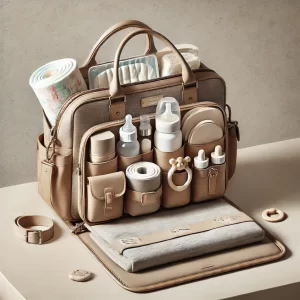Get real motherhood moments and gentle self-care tips straight to your inbox!
If you’re looking for advice on how to navigate this challenging breastfeeding era – whether you’re pregnant or recently gave birth – you’ve come to the perfect spot.
I wish I had learned so many things regarding breastfeeding before having my first child. Our breastfeeding experience concluded sooner than I had hoped.
By the way, this article may contain affiliate links where I may earn a small commission for purchases made via those links. This comes at no cost to you.
My baby and I could not get the latch perfect, and I believe she felt my release to be excessive (she was drowning in milk, poor thing). We battled to get in sync, and I ultimately pumped entirely for the first three months. This was a decent solution for a mother who wanted to breastfeed her child, but it was time-consuming and I would avoid doing it again for the sake of my sanity.

I’m not going to sugar coat it. Breastfeeding was painful and stressful, especially in the beginning. I experienced it all. But I am so glad, that I didn’t give up on breastfeeding. So here are some tips to help you keep going:
1. Start breastfeeding as soon as possible after birth.
The first hour after birth is known as the “golden hour” and is the best time to start breastfeeding. During this time, according to WHO your baby is alert and eager to feed, and the hormones released during birth can help stimulate milk production. Skin-to-skin contact can also help establish a strong bond between you and your baby. To make it easier for your baby to latch onto the breast consider using a nursing pillow like the Boppy Nursing Pillow to support your baby during feedings.
2. Make sure your baby is latching correctly.
A good latch is essential for successful breastfeeding. When your baby latches on, their mouth should be wide open, with their lips flanged out like a fish. Their chin should be pressed into your breast, and their nose should be close to your breast but not buried in it. This position ensures that your baby is able to suck effectively and get the milk they need. To promote proper latch, you can try using nipple shields like the Medela Contact Nipple Shields and The Silverette Metal Nipple Cups for extra smoothness
3. Breastfeed on demand.
In the early weeks, your baby may need to breastfeed frequently, sometimes as often as every 1-2 hours. This is normal and helps establish your milk supply. It’s important to feed your baby whenever they show hunger cues, such as smacking their lips, rooting around with their mouth, or bringing their hands to their mouth. Offering your breast often can also help prevent fussiness and crying.
4. Use different breastfeeding positions.
Experiment with different positions to find what works best for you and your baby. Some popular positions include the cradle hold, where you hold your baby in the crook of your arm; the football hold, where you hold your baby like a football under your arm; and the side-lying position, where you lie on your side and your baby feeds while lying next to you. The My Brest Friend Deluxe Nursing Pillow provides excellent support for various positions, promoting a relaxed and comfortable breastfeeding experience.
5. Pay attention to your baby’s hunger cues
As mentioned before, your baby may make sucking sounds, root around with their mouth, or bring their hands to their mouth when they’re hungry. Responding to these cues can help prevent fussiness and crying. It’s also important to pay attention to your baby’s fullness cues, such as slowing down their sucking, turning their head away from your breast, or falling asleep.
6. Stay hydrated and eat a balanced diet.
Breastfeeding can be thirsty work, so make sure you’re drinking enough water and eating a healthy, balanced diet to support milk production. Foods that can help boost milk production include oatmeal, leafy greens, and healthy fats like nuts and avocados. Consider using a handy water bottle like the Contigo Autospout Straw Water Bottle to ensure you’re meeting your hydration needs.
7. Get support from a Breastfeeding consultant.
If you’re struggling with breastfeeding, don’t hesitate to reach out to a lactation consultant or other breastfeeding support group. They can provide guidance on latching, position, and milk supply issues, as well as answer any questions you may have. You can also check out my other breastfeeding articles
8. Take care of your breasts.
Breastfeeding can be tough on your nipples and breasts, so be sure to take care of them. Use lanolin cream or other nipple creams to soothe sore nipples, and change breast pads frequently to prevent infection. You can also use warm compresses or take a warm shower to help relieve breast engorgement. Apply lanolin cream or nipple butter like the Earth Mama Organic Nipple Butter to soothe and protect your sore nipples.
Wearing comfortable and supportive nursing bras, such as the Motherhood Maternity Nursing Bra can also provide added comfort and convenience.
9. Keep track of feedings.
In the early weeks, it can be helpful to keep track of when your baby feeds and for how long. This can help you establish a feeding routine and ensure your baby is getting enough milk. You can use a breastfeeding log or app to track feedings, diaper changes, and other important information. A breastfeeding tracker like the Baby Nursing Log Book allows you to record feeding times, diaper changes, and any other relevant information. This can help you monitor your baby’s progress and identify any potential issues.
10. Be patient and persistent.
Breastfeeding can be challenging at times, but with patience and persistence, you and your baby can establish a successful breastfeeding relationship. Remember to take things one day at a time, and don’t be too hard on yourself if things don’t go perfectly at first. Seek support from your partner, family, and friends, and remember that with persistence and perseverance, you can overcome any hurdles that arise. Also seek help from a lactation Consultant
Other Recommended Products:
- Disposable Nursing Pads
- Breast Shells For Sore Nipples
- Manual Breast Pump
- Lactation Massager
- Breast Milk Storage Bags
- Soothing Nursing Pillow
- Hands Free Pumping Bra
- Breast Milk Collector
- Supplement For Clogged Milk Ducts
In conclusion
Nursing is a crucial part of parenting and has a number of advantages for both the mother and the child. It’s crucial for first-time mothers to start breastfeeding as soon as the baby is born and to make sure the infant is latching on properly. In order to build a good milk supply and enhance the feeding experiences for both mom and baby,
breastfeeding on demand and utilizing various nursing positions can be helpful. To encourage milk production, it’s also critical to pay attention to your baby’s hunger cues, drink enough of water, and eat a healthy diet. First-time mothers can feel confident and at ease when breastfeeding their new child with the help of these suggestions.








